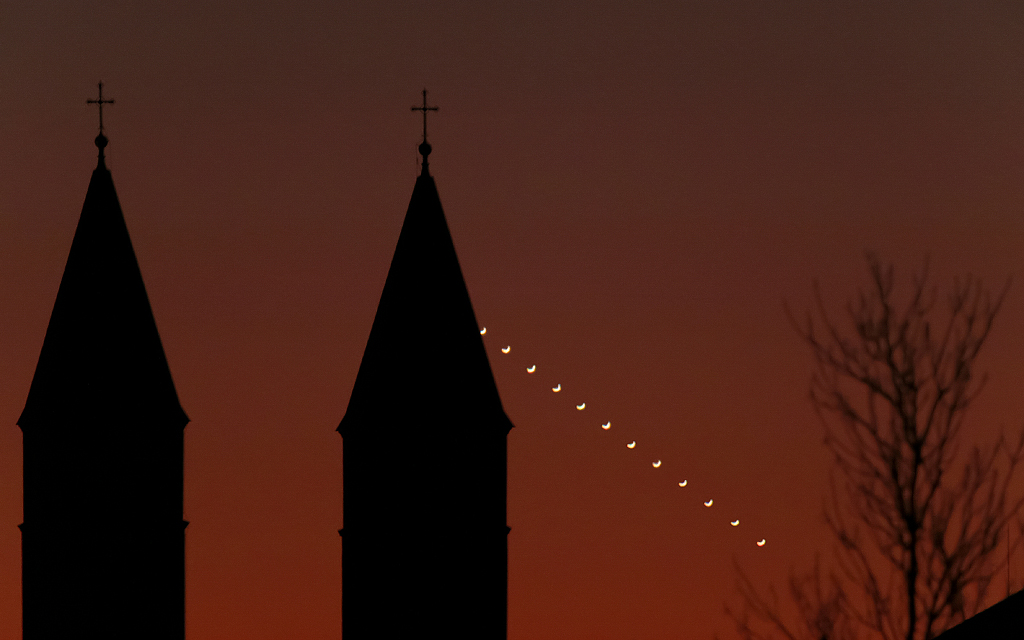2022年1月6日
The Last Days of Venus as the Evening Star
Image Credit & Copyright: Tamas Ladanyi (TWAN)
Explanation: That’s not a young crescent Moon posing behind cathedral towers after sunset. It’s Venus in a crescent phase. About 40 million kilometers away and about 2 percent illuminated by sunlight, it was captured with camera and telephoto lens in this series of exposures as it set in western skies on January 1 from Veszprem, Hungary. The bright celestial beacon was languishing in the evening twilight, its days as the Evening Star coming to a close as 2022 began. But it was also growing larger in apparent size and becoming an ever thinner crescent in telescopic views. Heading toward a (non-judgemental) inferior conjunction, the inner planet will be positioned between Earth and Sun on January 9 and generally lost from view in the solar glare. A crescent Venus will soon reappear though. Rising in the east by mid-month just before the Sun as the brilliant Morning Star.
Status Updates: Deploying the James Webb Space Telescope
Tomorrow’s picture: What the penguin saw.
即将卸任昏星的金星
影像提供与版权: Tamas Ladanyi (TWAN)
说明: 日落之后,悬在教堂尖塔后头的蛾眉天体,不是上弦月,而是蛾眉相的金星。在这幅用相机和长焦镜头摄于匈牙维斯普雷姆的序列影像里,1月1日的金星没入西天时,它与地球的间距约为4千万公里,日曜的表面则只有2%左右。在2022年刚开始的这些天里,这颗即将卸任昏星任务的明亮天体,仍在暮光中留连。不过在此同时,望远镜视窗里的金星,视张角愈来愈大,而蛾眉相则愈来愈纤细。往下合位置迈进的这颗内行星,1月9日会来到地球与太阳之间,因而淹没在太阳的炫光里。不过金星很快就会复现,在1月中旬左右,就会以晨星之姿升起,悬在日出前的东方天空中。
现况更新: 韦伯太空望远镜
明日的图片: What the penguin saw.







